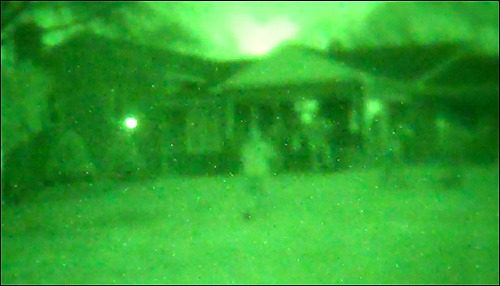If you are an avid hunter, you’ll need to be able to operate at night. There are many prey species, like feral pigs, that prefer to come out under the cover of darkness. To be able to spot them clearly, you’ll need to get a night vision device. But with so many to choose from, it can be hard to know which ones will best suit you. To make the choice easier, let’s look at some of the qualities that a good night vision device should possess.
Selecting the Right Kind of Device
There are plenty of types of night vision devices on the market. For example, you might want to use a monocular. This is designed for one eye and often won’t be magnified. You’ll need to keep both eyes open when looking through it, which can take a bit of getting used to. But this will come with a lot of accessories, which can make it one of the most versatile choices.
Another popular choice is binoculars. These come with magnification. But the further away you are looking, the dimmer the image will be. Also, many of them are permanently zoomed-in. Because of this, you might want to pair them with a monocular device for navigating across close distances.
Third, you might want to use a night vision scope. This has been designed to attach to a weapon. This will let you get the most accuracy. If you’re planning on hunting, it’s recommended that you get a dedicated night scope. This will offer better clarity than a day/night scope.
What Features Are Included?
Once you know what kind of device you want, it’s time to start focusing on what features will be included. There are plenty of cool features on the market. For example, you might want to get auto-gating. This helps keep the image clear, even if the light conditions are changing. This can be a good way to deal with muzzle flashes.
Another common option is getting something that can emit infrared light. In this case, it will emit a light that is almost invisible to the naked eye. But, viewed through the night vision device, it will look like a flashlight’s beam. This can be a good way to stalk animals and spot tracks, without shining any light that could alert them to your presence.
Battery Life
Before purchasing them, you’ll need to consider how long the battery life of the device will be. The last thing you want is for the scope to stop working part-way through the hunt. The battery life will be in the product specifications.
Durability
It’s important to make sure that you are choosing a durable device. It will need to be able to cope with the bumps and shakes that can occur during a hunt. It can help to look for a warranty. This will ensure that you’ll be able to get any issues fixed by the manufacturer.
Line Per Millimeter
LP/MM is one of the most important parts of the product specification. It will give you a good indicator of the clarity of the night vision device. A high-end device will be around 60 to 70 LP/MM.
Generation
Finally, when buying a night vision device, you’ll need to know what generation it is. As night vision technology evolved, it spawned a new generation of devices. There are four generations, with one being the least advanced and four the most sophisticated. It should also be noted that you might see a plus sign at the end of the generation. For example, you might see a generation 3+. This means that it will be a generation 3 device, with some fourth-generation attachments.
What generation will suit you best will depend on how you intend to use it. Third and fourth-generation devices are very expensive. Because of this, most hunters will opt to use a second-generation device. These offer clarity without needing to pay thousands.
Conclusion
If you’re planning on hunting after dark, you’ll need a night vision device. This will make it easy for you to spot your prey, without shining light to alert them to your presence. If you want some more tips on what to look for when you are shopping, check out this guide to night vision riflescopes. So, now you’ll be able to equip yourself for a successful night-time hunt.

